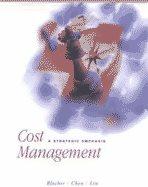Answered step by step
Verified Expert Solution
Question
1 Approved Answer
Use the template provided to create the following: Schedule 1: Sales Budget Schedule 2: Cash receipts Schedule 3: Production Budget in Units Schedule 4: Direct
| Use the template provided to create the following: | ||||||||
| Schedule 1: Sales Budget | ||||||||
| Schedule 2: Cash receipts | ||||||||
| Schedule 3: Production Budget in Units | ||||||||
| Schedule 4: Direct Materials Purchases | ||||||||
| Schedule 5: Cash Purchases Budget | ||||||||
| Schedule 6: Direct Labor Budget | ||||||||
| Schedule 7: Overhead Budget | ||||||||
| Schedule 8: Selling and Administrative Expense Budget | ||||||||
| Schedule 9: Ending Finished goods | ||||||||
| Schedule 10: Budgeted cost of goods sold | ||||||||
| Schedule 11: Cash Budget | ||||||||
| Schedule 12: Budgeted Income Statement | ||||||||
| Schedule 13: Budgeted Statement of Retained Earnings | ||||||||
| Schedule 14: Budgeted Balance Sheet | ||||||||
| WGT Balance Sheet | ||||||||||
| 01/01/2017 | ||||||||||
| Cash | $ 22,000 | |||||||||
| Accounts Receivable | 12,000 | |||||||||
| Inventory Raw Materials | 350 | |||||||||
| FG Inventory | 4,950 | |||||||||
| Land | 8,000 | |||||||||
| Buildings and Equip | 70,000 | |||||||||
| Accum Depr | (29,200) | |||||||||
| Total Assets | $ 88,100 | |||||||||
| Accounts Payable | $ 2,580 | |||||||||
| Capital Stock | 17,500 | |||||||||
| RE | 68,020 | |||||||||
| Total Liab and Stockholders | $ 88,100 | |||||||||
| 1. The marketing department projects the following sales levels: | ||||||||||
| Quarter 1, 2017 | 8,500 | Gnomes | ||||||||
| Quarter 2, 2017 | 9,900 | Gnomes | ||||||||
| Quarter 3, 2017 | 4,000 | Gnomes | ||||||||
| Quarter 4, 2017 | 3,700 | Gnomes | ||||||||
| Quarter 1, 2018 | 4,500 | Gnomes | ||||||||
| Quarter 2, 2018 | 2,900 | Gnomes | ||||||||
| The statues are expected to sell for | $35.00 | EACH | ||||||||
| 1. WGT sell all merchandise on credit. Historically, WGT receives | 70% | of each | ||||||||
| quarter's sales during the quarter and | 30% | in the next quarter. | ||||||||
| 2. WGT plans to stock the ending inventory of finished goods to equal | 55% | of the next quarter's sales. | ||||||||
| Finished Goods inventory at | 01/01/2017 | is 300 statues at a cost of $16.50 per unit. | ||||||||
| 3. The statues are made with both cement and plaster. The statues each require | 6.50 | |||||||||
| pounds of cement at a cost of | $0.70 | per pound. | ||||||||
| In addition, the statues require | 7 | pounds of plaster at | $0.60 | per pound. At | ||||||
| 12/31/2016 | WGT had 500 pounds of cement on hand and no plaster | |||||||||
| on hand. WGT plans to keep | 60% | of the cement and | 50% | of the plaster required | ||||||
| required for next quarter's production in inventory at the end of each quarter. | ||||||||||
| WGT pays for purchases as follows: | 60% | in the quarter purchased and | 40% | in the quarter following | ||||||
| the purchase. | ||||||||||
| 4. Each of the statue requires | 0.7 | hrs of direct labor at | $7.50 | per hour. Employees are paid | ||||||
| on the last day of each month for that month's work. Other costs are paid in the quarter unless otherwise noted. | ||||||||||
| 5. Variable overhead is estimated at | $3.20 | per direct labor hour. Fixed overhead costs are | $40,000 | |||||||
| per year. Fixed overhead includes depreciation of | $10,000 | per year. | ||||||||
| 6. Variable selling and administrative costs are | $4.75 | per unit. Fixed selling and administrative costs are | ||||||||
| $28,000 | per year. (This includes | $8,000 | of depreciation per year) | |||||||
| 7. WGT makes quarterly income tax payments of | $7,500 | The coprorate income tax rate is | 35% | of net | ||||||
| before taxes (consider underpayments on your balance sheet). | ||||||||||
| 8. WGT pays quarterly dividends of | $5,000 | . | ||||||||
| 9. WGT will purchase additional equipment using cash on the following schedule | ||||||||||
| (depreciation is already included above): | ||||||||||
| Quarter 1 | $ 5,000 | |||||||||
| Quarter 2 | $ 4,000 | |||||||||
| Quarter 3 | $ - | |||||||||
| Quarter 4 | $ - | |||||||||
| 10. WGT has to maintain a minimum cash balance of | $10,000 | All borrowings are made at the end of the | ||||||||
| quarter and paid back at the end of the first quarter where there is a cash surplus to make the debt payments. | ||||||||||
| All borrowings and repayments are made in $1,000 increments. Interest is paid at the time of | ||||||||||
| repayment and is calculated at | 3.00% | per year (no Compounding). | ||||||||
|
Step by Step Solution
There are 3 Steps involved in it
Step: 1

Get Instant Access to Expert-Tailored Solutions
See step-by-step solutions with expert insights and AI powered tools for academic success
Step: 2

Step: 3

Ace Your Homework with AI
Get the answers you need in no time with our AI-driven, step-by-step assistance
Get Started


